Homemade Corned Beef is simple to make, but takes about a week. The intense flavors and beautiful pink hue are worth the time and wait! Perfect for St. Patrick’s Day!
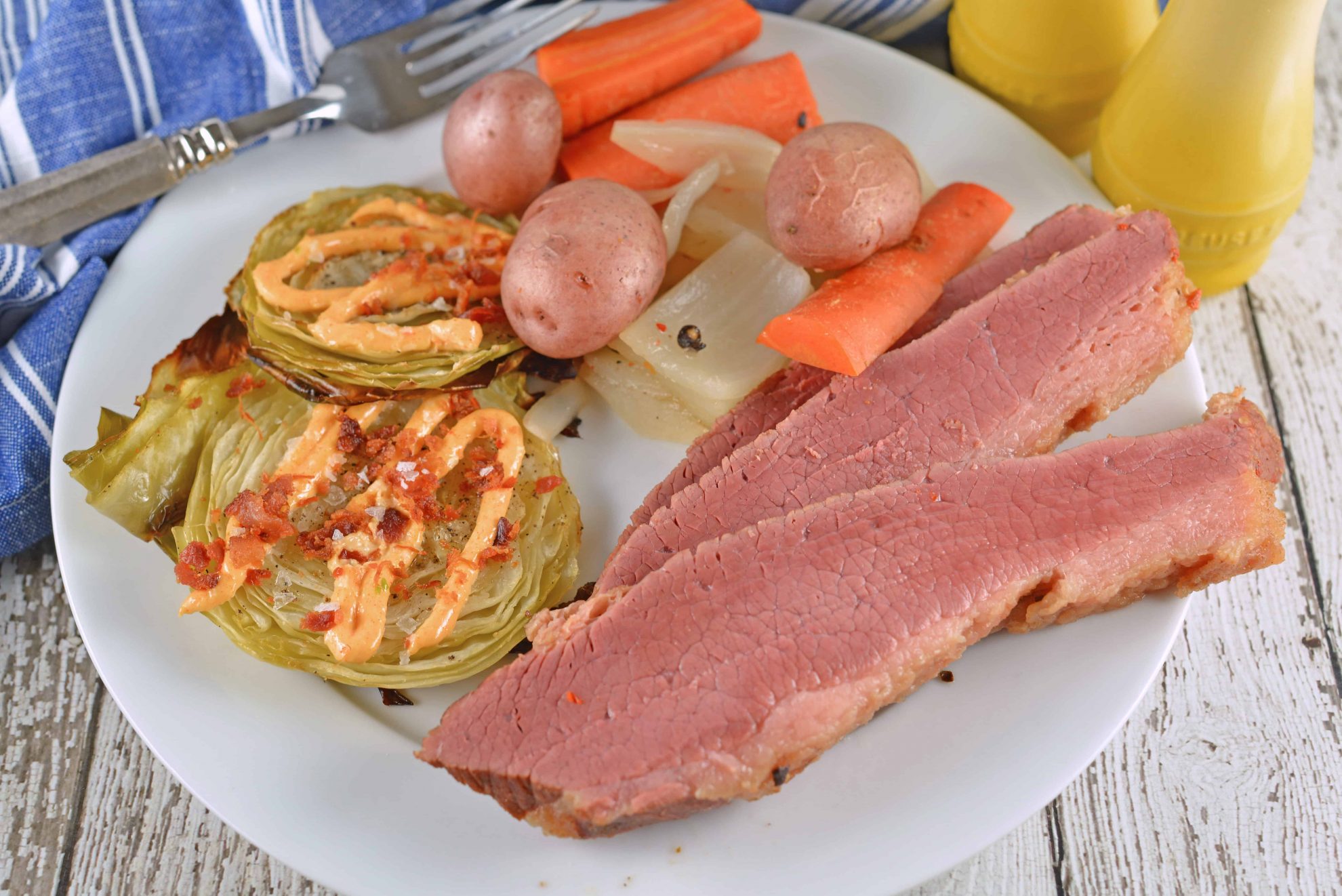
Grab at the Grocery Store
You will easily be able to find all of these homemade corned beef ingredients at your local grocery store. A full list of ingredients with measurements is available in the printable recipe card below.
- Water – This is the base for our brine. The process of brining not only infuses meat with flavor, it also tenderizes chewy pieces, making them more palatable. In corned beef’s case, we call it a cure.
- Kosher salt – The general rule for a brine is two cups of salt for every gallon of water. And yes, the type of salt matters, so keep that in mind.
- Pink curing salt – This is what helps to give the corned beef that signature pink color. However, it isn’t necessary and you can leave it out if you prefer.
- Pickling spices – I like to make my own pickling spice with allspice berries, coriander seeds, ginger, star anise, cloves, cinnamon, peppercorns, cardamom pods, mustard seeds, bay leaves and red pepper flakes.
- Brown sugar – I like my brine to have a little sweetness. Brown sugar also adds a molasses flavor too.
- Beef brisket – Look for a flat cut, which is less fatty than the point cut, wit the fat being a cap on the bottom. It is slightly more expensive, but prettier and slices nicer, which is what we are looking for in a nice homemade corned beef.
- Carrots – You can choose to either use baby carrots or whole large carrots cut into smaller pieces.
- Small red potatoes – Baby red potatoes, fingerlings or creamers are all acceptable. I cut them in half to makes sure they cook at the same rate as the carrots.
- Sweet onion – This cooks with the potatoes and carrots, and adds flavor to the finished product.
- Guinness stout – This is optional, but does give it a nice finishing flavor and ads to the “Irish” theme of St. Patrick’s Day.
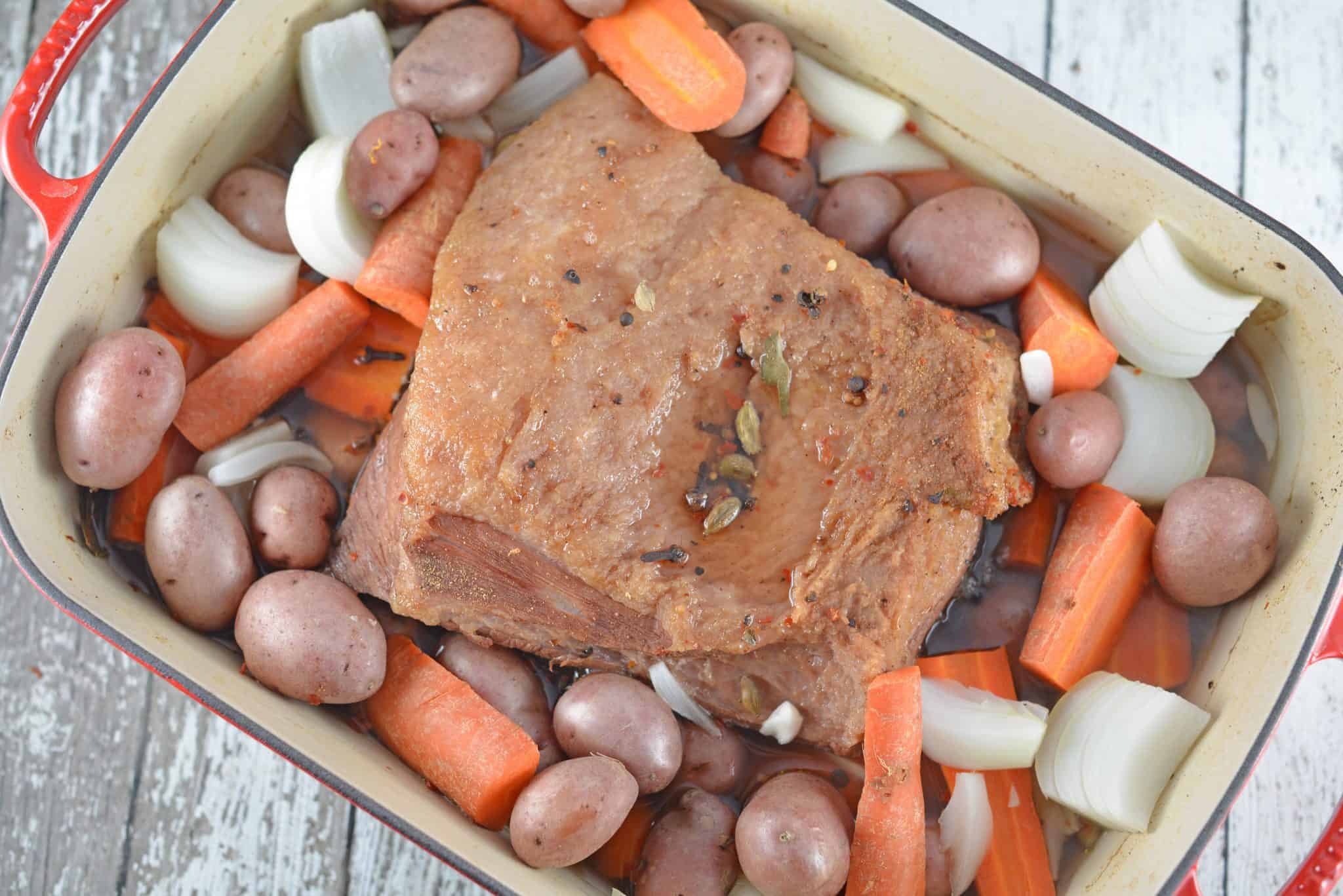
The Game Plan
Making homemade corned beef is a labor of love, but the end result is totally worth it!
- Make brine. To make the brine, combine water, Kosher salt, pink curing salt, pickling spices and brown sugar in a large stock pot. Bring to a low boil, stirring to make sure the salt and sugar dissolve. Remove and all to come to room temperture.
- Add brisket to brine. In a large plastic container, place cleaned brisket and cover with room temperture brine. Make sure the brisket is fully submerged in brine liquid for one to two weeks in the refrigerator.
- Remove from brine. When ready to cook, remove from brine, reserving pickling spices. Place into a roasting pan and preheat oven.
- Cover and cook. Cover with water and Guinness stout (optional). Cover with aluminum foil and braise for one hour or every pound of brisket.
- Add vegetables. About 45 minutes before serving, remove brisket from oven. Ladle out 80% of the liquid. Spread vegetables around the brisket and return to the oven, uncovered.
- Allow to rest then serve. Remove and allow meat to rest before slicing against the grain. You can return to the juices and toss before serving with vegetables.
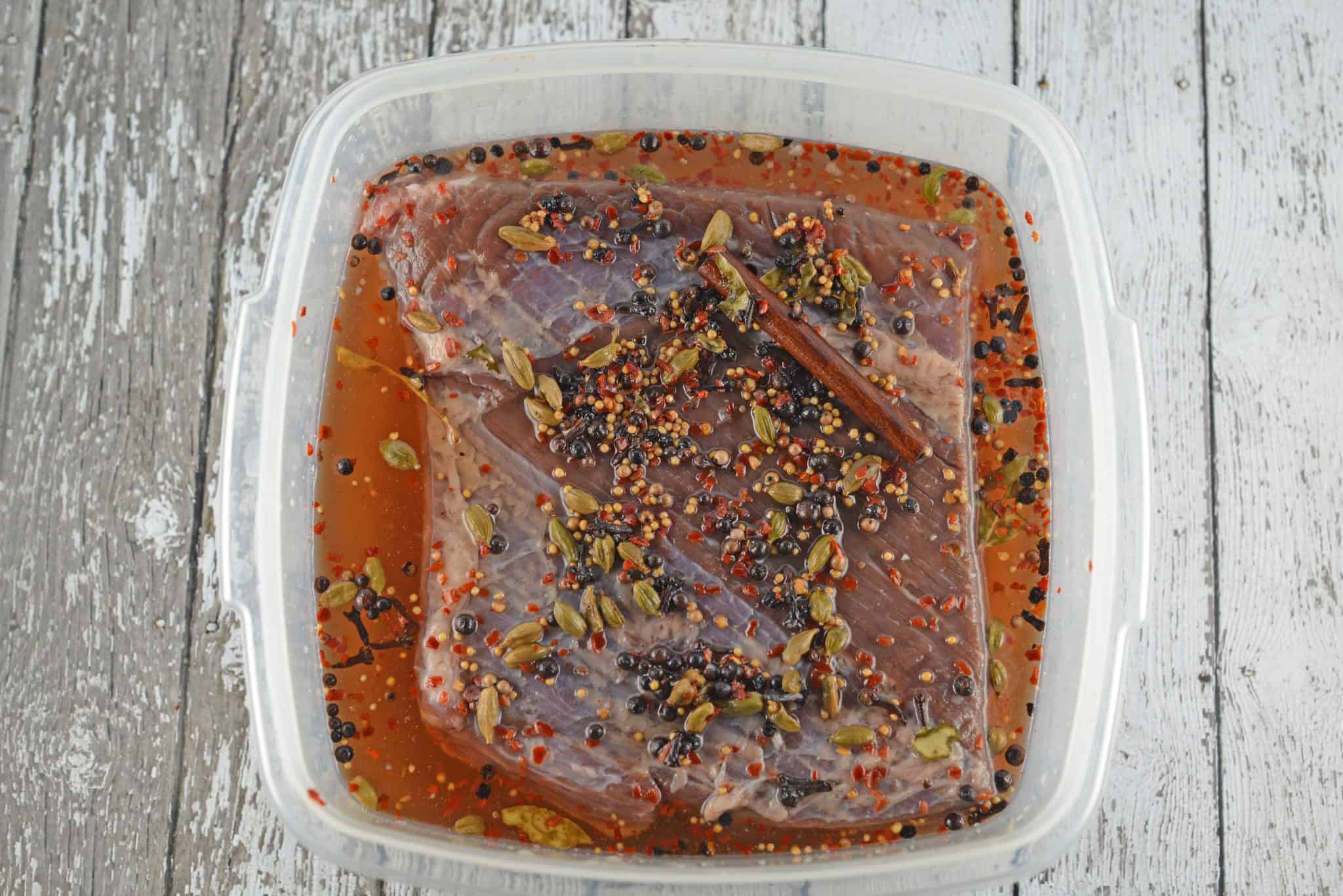
5S Philosophy 👩🏻🍳
- Salt – Corned beef already uses a good amount of salt in the brine. So make sure to taste test before adding any more.
- Seasoning – The pickling spices in this recipe have plenty of earthy warm goodness. You can always add some extra black pepper if you’d like to.
- Sauces – Mustard sauce, horseradish sauce, and Guinness gravy are all great options for topping the beef.
- Swaps – To add even more flavor, try using broth or beer instead of water when brining.
- Senses – Homemade corned beef is a feast for the senses. As it cooks, the air fills with the rich, savory aroma of spices like bay leaves, cloves, and mustard seeds, blending with the deep, meaty scent of slow-cooked beef. The first bite is tender and juicy, with a perfect balance of saltiness and subtle spice.
Make it a Meal!
Serve your homemade corned beef with my cabbage steaks with a garlic aioli! Crusty bread is also a great option. Make your own easy, no-yeast bread like my potato bread, Irish soda bread or roast garlic bread. Or opt for my award-winning garlic bread spread or 2-ingredient bread sticks. Focaccia or cornbread casserole are also lovely choices.
Also consider making it in the Instant Pot and or Slow Cooker Corned Beef and then using leftovers for soup! Leftovers can be used for corned beef hash.
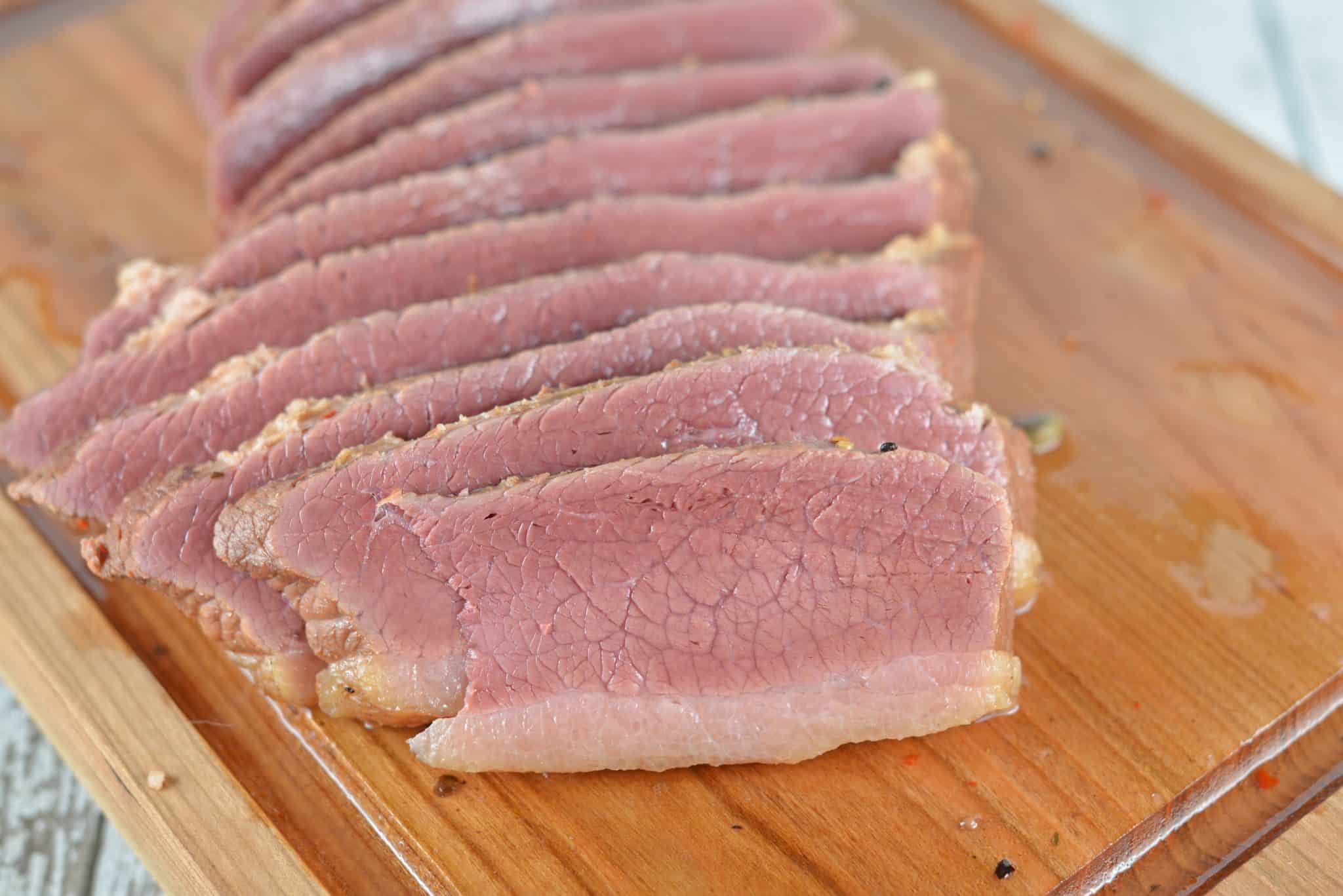
Storage and Freezing
You can make corned beef ahead of time and just heat it up when you are ready to eat. I would aim to prepare it 1-2 days before your meal.
How to Store
Store leftover homemade corned beef in an airtight container in the refrigerator for up to 5 days. Leftovers can be heated low and slow in the oven at 300°F for 15 minutes. Add some liquid (chicken broth, beer or water) to the pan to help it stay moist. Or heat it in the microwave.
Can I Freeze Homemade Pot Corned Beef?
You can certainly freeze corned beef. Place the meat in a plastic freezer bag, releasing as much air as possible, and freeze for up to 6 months. Thaw overnight in the refrigerator and then reheat according to leftover directions.
Favorite Beef Recipes
I love beef so much, I wrote a book about it! Here are some of our other favorite beefy recipes.
How to Make Corned Beef
Equipment
Ingredients
- 1 gallon water
- 2 cups kosher salt
- 4 ounces pink curing salt see notes
- 4 tablespoons pickling spices
- 3/4 cup brown sugar
- 3-4 pound beef brisket
- 3-4 carrots cut into 3 inch pieces
- 1 pound small red potatoes scrubbed
- 1 sweet onion quartered
- 12 ounces Guinness stout optional
Instructions
- To make the brine, combine water, Kosher salt, pink curing salt, pickling spices and brown sugar in a large stock pot. Bring to a low boil, stirring to make sure the salt and sugar dissolve.
- Remove and all to come to room temperture.
- In a large plastic container, place cleaned brisket and cover with room temperture brine. Make sure the brisket is fully submerged in brine liquid. You might have too much brine, skim out spices and add to brisket, while discarding any leftover liquid.
- Brine for 7-14 days in the refrigerator, making sure it is fully submerged each day.
- When ready to cook, remove from brine, reserving pickling spices. Place into a roasting pan and preheat oven to 250 degrees.
- Cover with 8 cups water and Guinness stout (optional). Cover with aluminum foil and braise for 1 hour or every pound of brisket.
- About 45 minutes before serving, remove brisket from oven. Ladle out 80% of the liquid. Spread vegetables around the brisket and return to the oven, uncovered.
- Remove and allow meat to rest for 10 minutes before slicing against the grain. You can return to the juices and toss before serving with vegetables.
Nutrition
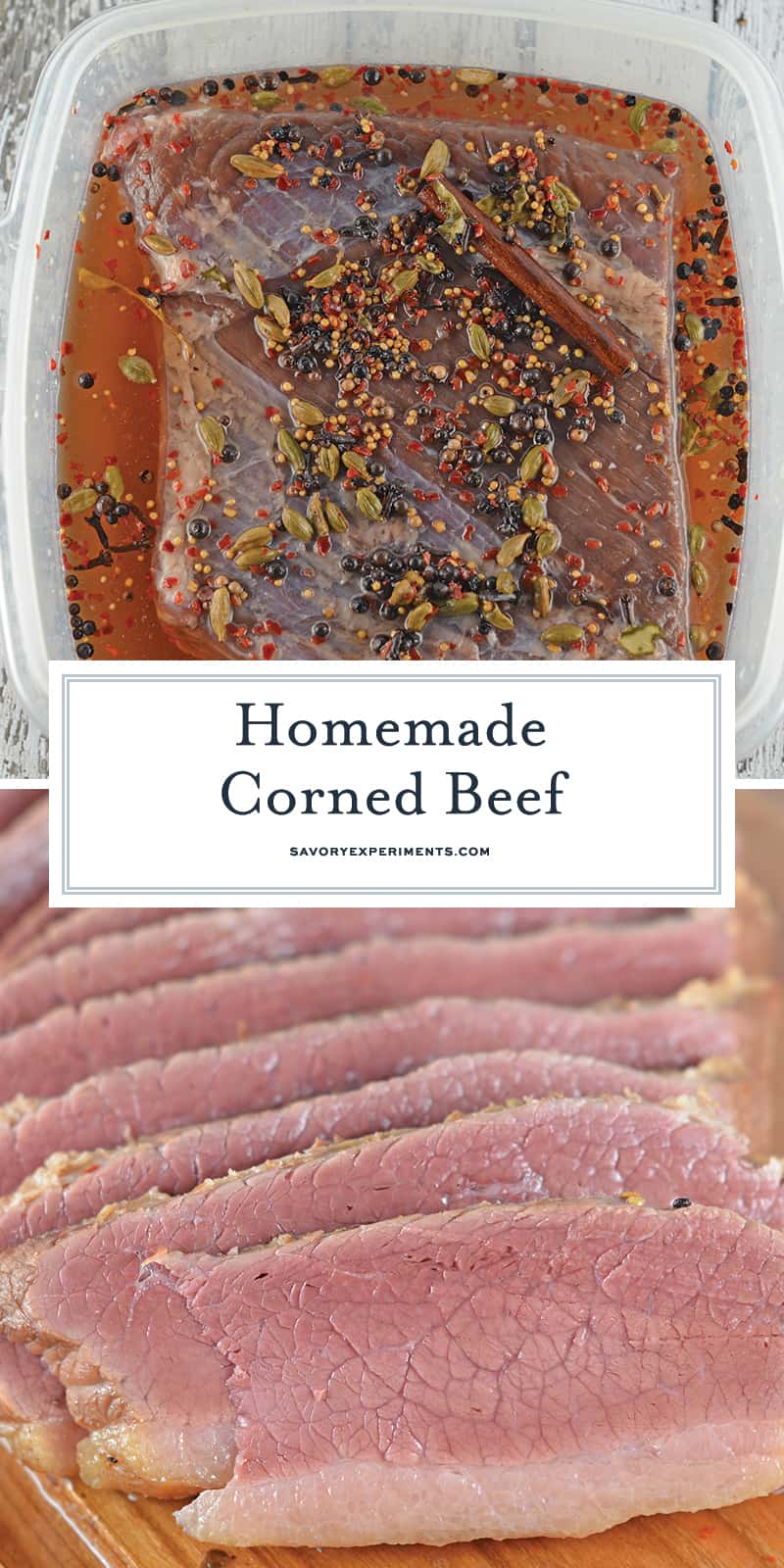
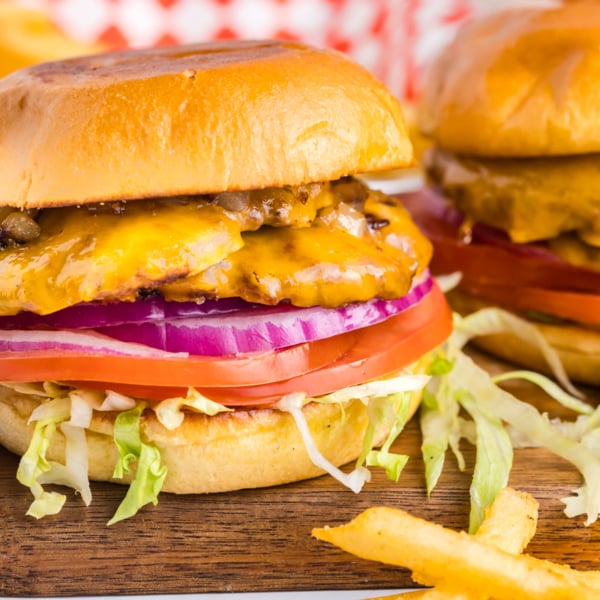
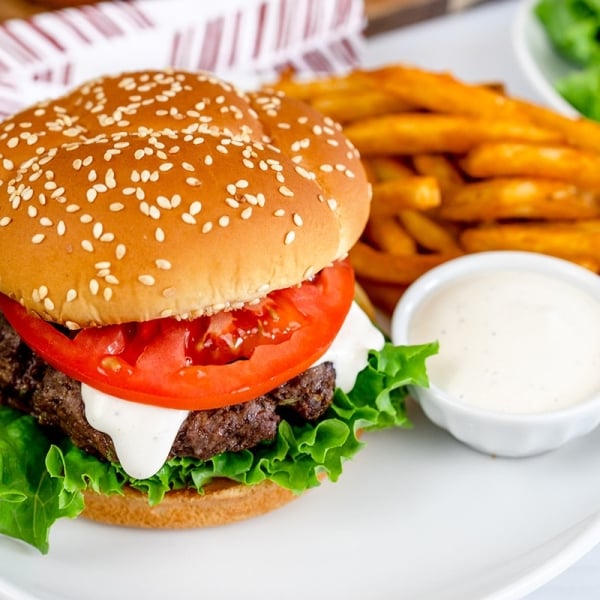
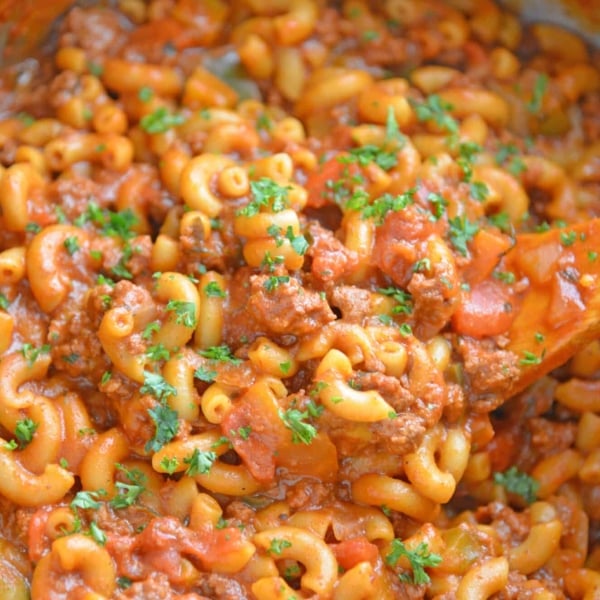
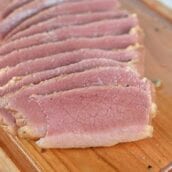

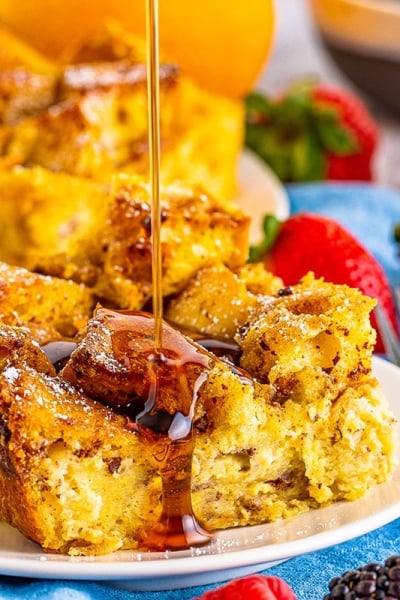
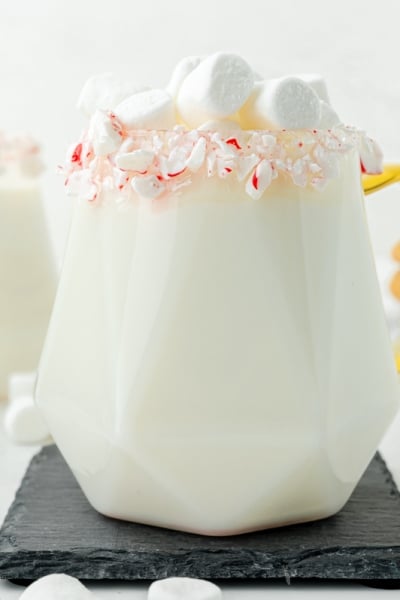

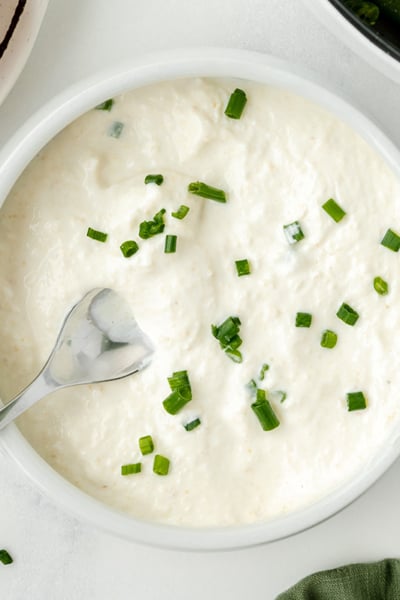













Can the brisket be cured with less sodium content?
You can reduce the salt slightly, but curing is done with salt and sodium, it can’t really be done without it. The definition of curing is to preserve with salt. Corned beef is very high in sodium.
Was wondering how the recipe would change with the cooking time and brining ingredients when there are 2 separate briskets weighing 4.5 lbs a piece.
Hi Stephanie, that is a great question! I would say nothing, actually. Maybe just a slight increase. Since the total weight (total circumference) is the same, it should be fine. It might just take a little longer for the liquid to come to temperature.
you said you used 1/2 cup of salt but to one of the questions asked but your recipe says 2 cups salt?
Hi Dale! I used 2 cups of Kosher salt, but 1/2 cup of the Pink Prague powder (pink salt that gives the beef its rosy color).
Does this use Prague Powder #1 or #2??
I used prague powder #1 since it isn’t considered to be a long cured meat.
Are you sure about the amount of pink salt? I’m asking because most things using it have a lot less than that per pound of meat. I don’t want to overdo that ingredient as it might not be safe!
Hi RG! Great question. Yes, I used about 1/2 cup. The difference might be that I use a whole gallon of water and many of the recipes I have come across use only 1 or 2 quarts and 4-6 teaspoons of pink curing salt. I will say that the use of pink salt is purely optional. You won’t get the rosy color, but the Kosher salt will provide enough salt in the brine by itself. You can also use less, if you’d like. Hope that helps!
What temperature is the liquid while brining (room temp or refrigerated)?
Hi Greg,
Great question, it is refrigerated. I’ll make sure that is super clear. Happy St. Patrick’s Day!
Such a perfect dinner for St. Patrick’s Day. I love corned beef and yours looks absolutely perfect! Love that you roasted yours too!
This looks like a great recipe! Just in time for St. Patrick’s Day
I often make my own corned venison! I haven’t tried it with beef yet. I think I would cried at the loss of the $40 cut too!
Never made corned beef before I guess now is the time for me to learn as St Patricks is coming soon! Thanks for the tips.
This is such a great recipe!!